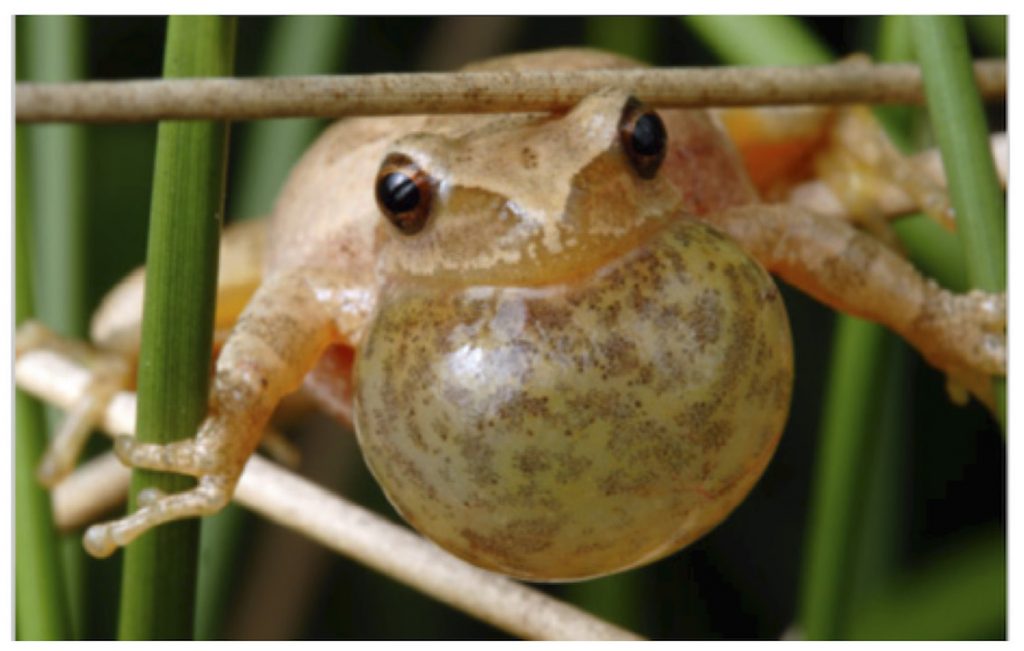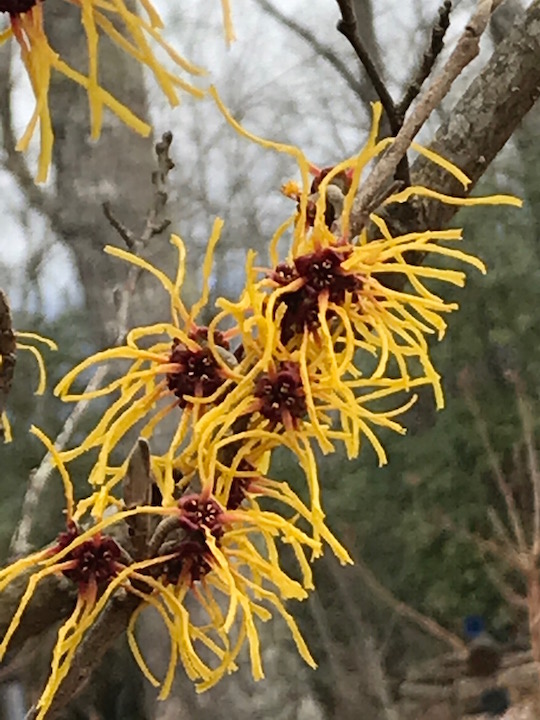March Madness

by Linda Martinson Blue Ridge Naturalist
March has been on the chilly side with lots and lots of rain but thankfully, not much snow. During the hushed and rain-soaked months of January and February and into early March, I spent several walks watching for intriguing lichens. Lichens aren’t at all bothered by cold weather, and they love rainy weather during which they break dormancy and absorb 3 to 35 times their weight in water. In the winter, there is more available light for lichens and when you see them standing out clearly against the trees, they are busy photosynthesizing the light while they can absorb water from the air. Ponder the lichens; they are neither plant nor animal, but instead a unique mutualistic symbiosis of at least two different kinds of fungi, algae and bacteria. Together they form rather than grow, and they can go where none of the composite organisms could go alone. (See my February 2015 Nature Notes for more information about lichens although it may be outdated, because scientific discoveries about the 20,000+ species of lichens are being made all the time!)

The waterfalls have been booming because of all the rain, and also the deer have been thundering around. In March, it’s a rare week when we don’t spot a deer carcass somewhere along the roads, or see two or three deer bounding along together across the meadows or through the woods. They are not mating — rutting season for deer is in the fall. It’s more likely that these are young does that formed loose family units last summer and are now seeking each other out as the weather warms up. Deer are fast and quick, sprinting up to 30 miles per hour; leaping as high as 10 feet and bounding as far as 30 feet. A baby fawn can outrun a human when it is less than a week old. The deer in our area are white-tailed deer or Virginia deer (Odocoileus virginianus), and the smallest of the five species of deer in North American (i.e., white-tailed deer, mule deer, caribou, elk, and moose). It is estimated that there are approximately 1.25 million white-tailed deer in North Carolina, most of them in the Piedmont and Coastal areas. They are not as numerous in the mountains, but there are still plenty of them around! Coincidentally, lichens are an important source of food for deer.., especially in the winter.

On a cold and dreary afternoon in mid-March, I was walking by the West Fork of the French Broad River from one end of the Richland Ridge property to the other. At either end of my approximately one mile walk are active and productive beaver ponds. As I walked by the first set of beaver ponds, I thought I heard a spring peeper — just one. That would have been most unusual, because they usually come out of the woods by the hundreds in late March and early Aril to congregate in wetland breeding areas. They are tiny, but when all the males swell their throats and begin their persistent calls for mates, their chorus is fairly loud and intense. I couldn’t imagine they would send out just one sentinel, but maybe? It took me about a half hour to walk down and back to the other beaver marsh area and to admire the large tree the beavers had felled in the fall. When I walked back to the first beaver ponds, I heard a loud chorus of spring peepers — the first chorus of Spring 2019! It made me wonder if they really did send out a scout this year? (Check my Nature Notes of April 2015 for more information about spring peepers.)

Maybe it was the rain and persistent cold weather, but the witch hazel trees bloomed from late January into early March this winter. Witch hazel is an interesting blooming tree in many regards, one being that they don’t all bloom at the same time every year. Apparently, when they bloom does depend upon the weather. Also, the flowers are quite hardy with an arresting shape and color — one gardener described them as “almost alien like.” There are also a wide range of medicinal uses for witch hazel. For example, extracts of the leaves and bark of the North American witch-hazel (Hamamelis virginiana) have been used for medicinal purposes for a long time, not only for home remedies by native Americans and early settlers, but also today as a commercial astringent called “witch hazel” and in other common healthcare products.

The bears are up and at ‘em. I haven’t seen any yet nor have I seen any logs or dead trees have ripped apart for a break-the-winter-fast meal, but our dog has rushed outside fairly often lately barking his “bear bark,” but not leaving the porch at all! Now, I’m waiting for the hummingbirds to return any day now. I have their feeder ready outside, and I’m rooting for those little wisps of smart, cantankerous and tough little birds to complete their long migrations of thousands of miles to turn up again in our yard for the summer.







27 comments